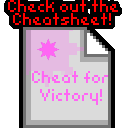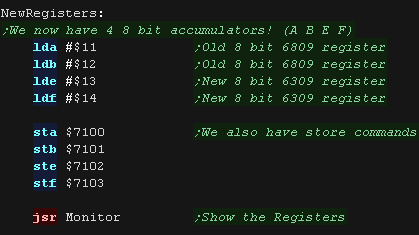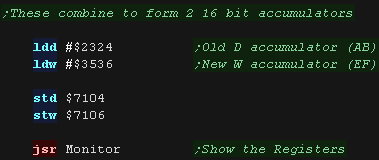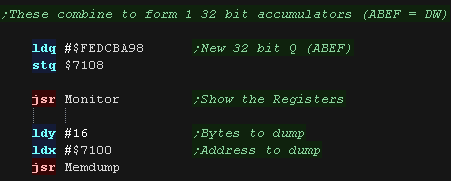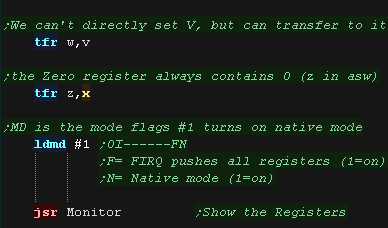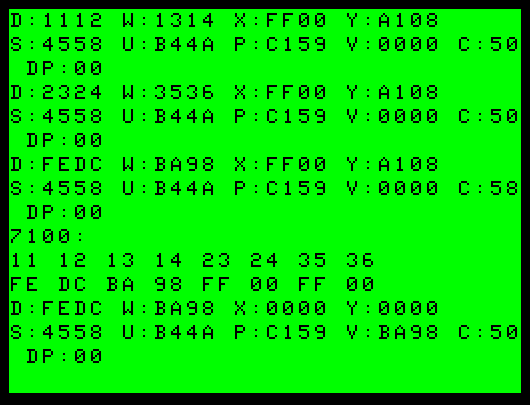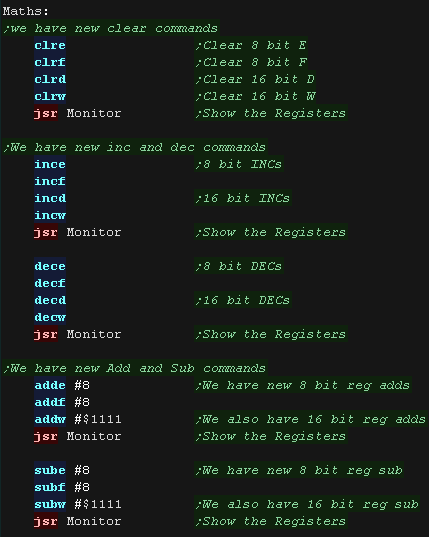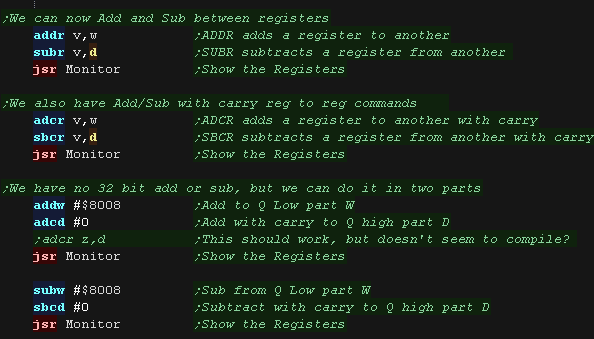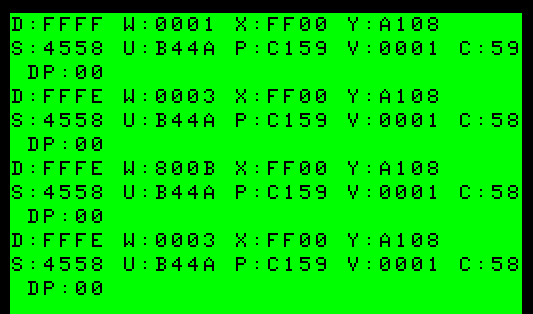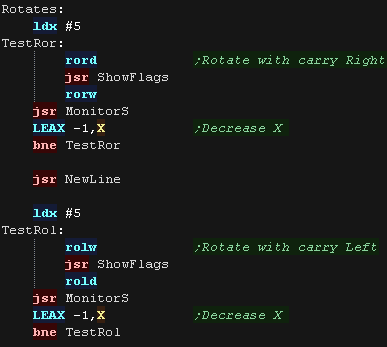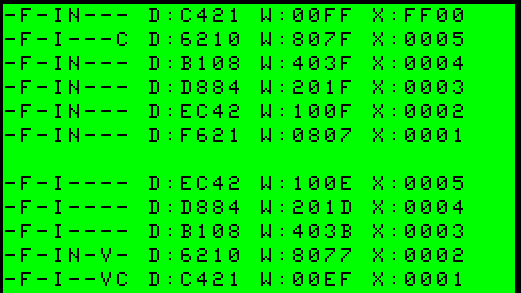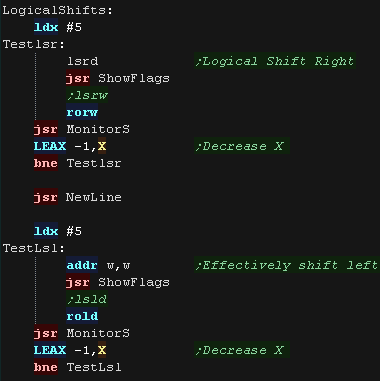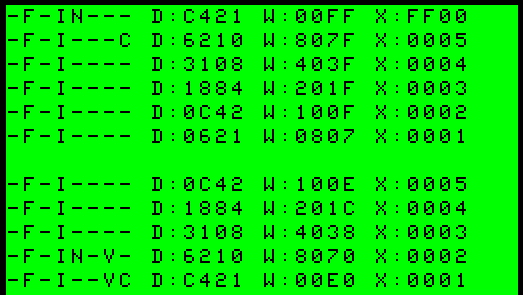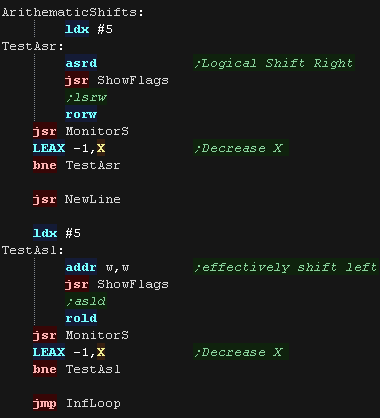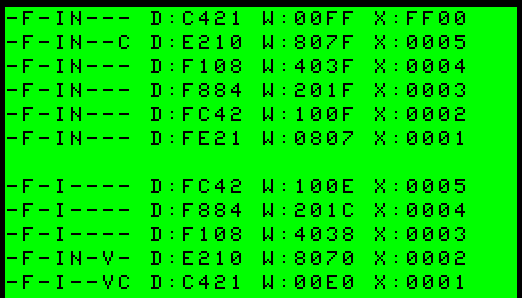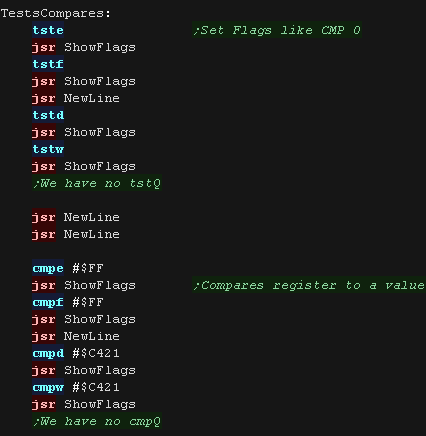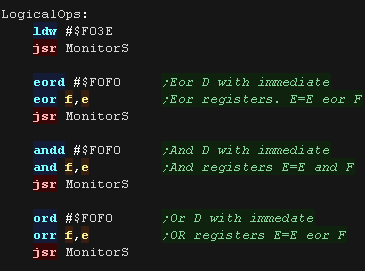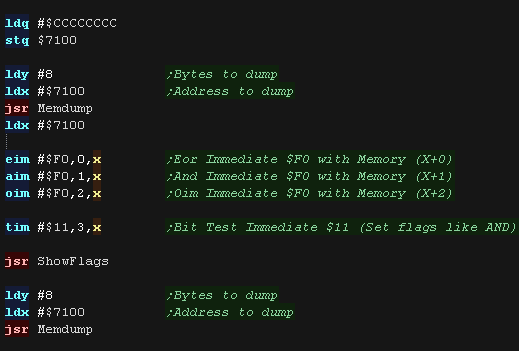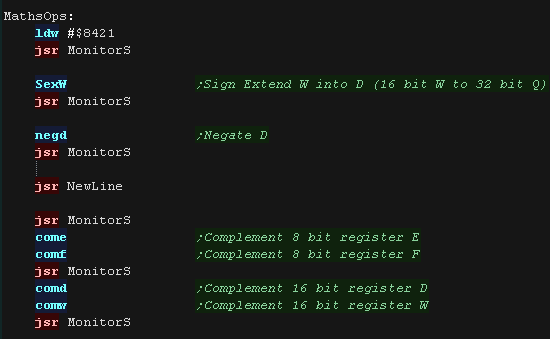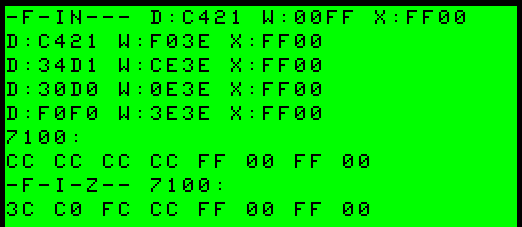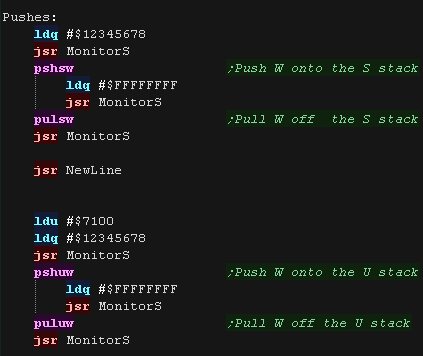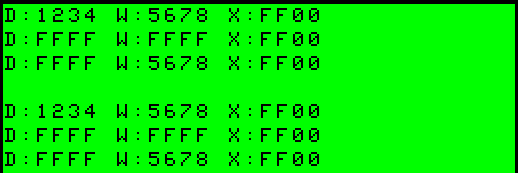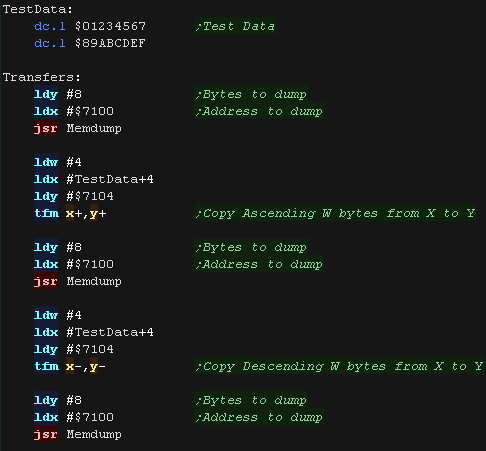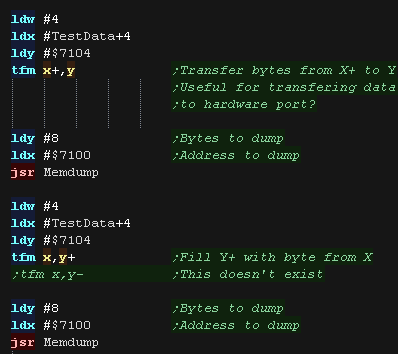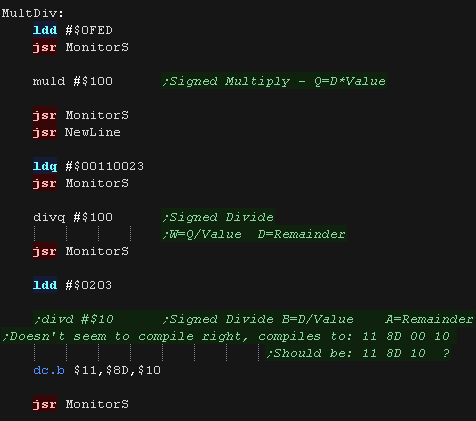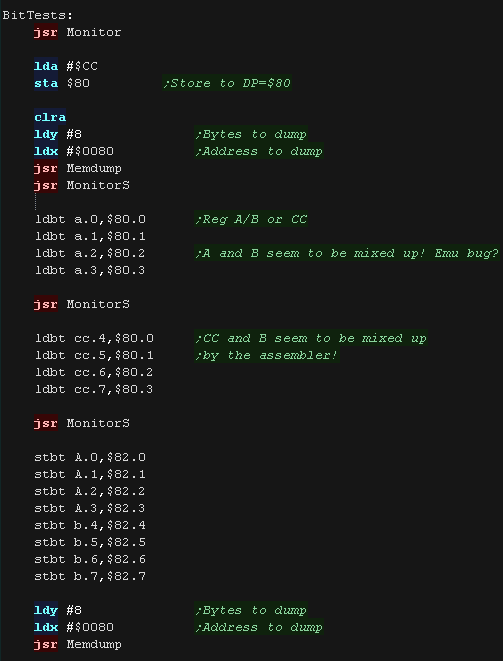What is
the 6309 and what are 8 'bits' You can skip this if you
know about binary and Hex (This is a copy of the same section in the Z80
tutorial)
The 6309 is an 8-Bit processor with a 16 bit Address bus!... it has two 8
bit accumulators, A and B, that can be combined to make up one 16 bit
accumulator D (AB)
What's 8 bit... well, one 'Bit' can be 1 or 0
four bits make a Nibble (0-15)
two nibbles (8 bits) make a byte (0-255)
two bytes (16 bits) make a word (0-65535)
And what is 65535? well that's 64 kilobytes ... in computers Kilo is 1024,
because four bytes is 1024 bytes
64 kilobytes is the amount of memory a basic 8-bit system can access
the 6309 is 8 bit so it's best at numbers less than 256... it can do
numbers up to 65535 too more slowly... and really big numbers will be much
harder to do! - we can design our game round small numbers so these limits
aren't a problem.
 |
You probably
think 64 kilobytes doesn't sound much when a small game now
takes 8 gigabytes, but that's 'cos modern games are sloppy,
inefficient, fat and lazy - like the basement dwelling
losers who wrote them!!!
6309 code is small, fast, and super efficient - with ASM you can
do things in 1k that will amaze you! |
Numbers in Assembly can be represented in different ways.
A 'Nibble' (half a byte) can be represented as Binary (0000-1111) ,
Decimal (0-15) or Hexadecimal (0-F)... unfortunately, you'll need to
learn all three for programming!
Also a letter can be a number... Capital 'A' is stored in the
computer as number 65!
Think of Hexadecimal as being the number system invented by someone wit h
15 fingers, ABCDEF are just numbers above 9!
Decimal is just the same, it only has 1 and 0.
In this guide, Binary will shown with a % symbol... eg %11001100 ...
hexadecimal will be shown with & eg.. &FF.
Assemblers will
use a symbol to denote a hexadecimal number, some use $FF or #FF
or even 0x, but this guide uses & - as this is how
hexadecimal is represented in CPC basic
All the code in this tutorial is designed for compiling with
WinApe's assembler - if you're using something else you may need
to change a few things!
But remember, whatever compiler you use, while the text based
source code may need to be slightly different, the compiled
"BYTES' will be the same! |
 |
| Decimal |
0 |
1 |
2 |
3 |
4 |
5 |
6 |
7 |
8 |
9 |
10 |
11 |
12 |
13 |
14 |
15 |
... |
255 |
| Binary |
0000 |
0001 |
0010 |
0011 |
0100 |
0101 |
0110 |
0111 |
1000 |
1001 |
1010 |
1011 |
1100 |
1101 |
1110 |
1111 |
|
11111111 |
| Hexadecimal |
0 |
1 |
2 |
3 |
4 |
5 |
6 |
7 |
8 |
9 |
A |
B |
C |
D |
E |
F |
|
FF |
Another way to think of binary is think what each digit is 'Worth'
... each digit in a number has it's own value... lets take a look at
%11001100 in detail and add up it's total
| Bit position |
7 |
6 |
5 |
4 |
3 |
2 |
1 |
0 |
| Digit Value (D) |
128 |
64 |
32 |
16 |
8 |
4 |
2 |
1 |
| Our number (N) |
1 |
1 |
0 |
0 |
1 |
1 |
0 |
0 |
| D x N |
128 |
64 |
0 |
0 |
8 |
4 |
0 |
0 |
| 128+64+8+4= 204
So %11001100 = 204
! |
If a binary number is small, it may be shown as %11 ... this is the
same as %00000011
Also notice in the chart above, each bit has a number, the bit on
the far right is no 0, and the far left is 7... don't worry about it
now, but you will need it one day!
If you ever get confused, look at Windows
Calculator, Switch to 'Programmer Mode' and it has binary
and Hexadecimal view, so you can change numbers from one form to
another!
If you're an Excel fan, Look up the functions DEC2BIN and DEC2HEX...
Excel
has all the commands to you need to convert one thing to the
other! |
 |
But wait! I said a Byte could go from 0-255 before, well what
happens if you add 1 to 255? Well it overflows, and goes back to 0!...
The same happens if we add 2 to 254... if we add 2 to 255, we will
end up with 1
this is actually usefull, as if we want to subtract a number, we
can use this to work out what number to add to get the effect we want
| Negative number |
-1 |
-2 |
-3 |
-5 |
-10 |
-20 |
-50 |
-254 |
-255 |
| Equivalent Byte value |
255 |
254 |
253 |
251 |
246 |
236 |
206 |
2 |
1 |
| Equivalent Hex Byte Value |
FF |
FE |
FD |
FB |
F6 |
EC |
CE |
2 |
1 |
 |
All these number types can be confusing,
but don't worry! Your Assembler will do the work for you!
You can type %11111111 , &FF , 255 or -1
... but the assembler knows these are all the same thing!
Type whatever you prefer in your ode and the assembler will work
out what that means and put the right data in the compiled code! |
The 6309 Registers
Compared to the 6502, the 6309 is seriously powerful - and even gives the
Z80 something to think about!
|
8 Bit |
16 Bit |
24 Bit |
32 Bit |
Use cases |
| accumulator A |
A |
|
|
|
8 Bit Accumulator |
| accumulator B |
B |
|
|
|
8 Bit Accumulator |
| accumulator E |
E
|
|
|
|
|
| accumulator F |
F
|
|
|
|
|
16-Bit Accumulator D
|
A |
B |
|
|
A+B combined to make a 16 bit Double
accumulator |
| 16-Bit Accumulator W |
E |
F
|
|
|
E+F combined to make a 16 bit Word
accumulator |
| 32-Bit Accumulator Q |
A
|
B
|
E
|
F
|
A+B+E+F combined to make a 32 bit Quad
accumulator |
| Condition Code Register |
CCR |
|
|
|
Flags |
| Mode Register |
MD |
|
|
|
|
| Zero Register (fixed) |
0
/ Z
|
|
|
|
| Transfer Value |
V |
|
|
Fixed Value... accessible via TFR only
survives reset! |
| Indirect X |
X |
|
|
Indirect Register |
| Indirect Y |
Y |
|
|
Indirect Register
|
| User Stack Pointer |
U |
|
|
User Stack |
| Hardware Stack Pointer |
S |
|
|
Stack |
| Program Counter |
PC |
|
|
Running Command |
| Direct Page |
DP |
|
|
|
Zero page is relocatable on 6309 |
|
|
MD: 0I------FN
CC: EFHINZVC
|
Name |
Meaning |
0
|
/0
|
Division By Zero |
I
|
IL
|
Illegal instruction Exception |
| F |
FM
|
FIRQ pushes all registers (1=on) |
N
|
NM
|
Native mode (1=on) |
| E |
Entire Flag |
Regular/Fast Interrupt flag
|
| F |
FIRQ Mask |
Fast Interrupt Flag
|
| H |
Half Carry |
Bit 3/4 carry for BCD
|
| I |
IRQ Mask |
Interrupt Flag
|
| N |
Negative |
|
| Z |
Zero |
|
| V |
oVerflow |
|
| C |
Carry |
|
|
note E and F cannot be pushed with PSHS ...
you must use PSHSW and PULSW (W=E+F)
Like the 6502, there are a variety of
'Interrupt Vectors' with fixed addresses...
The 6309 Addressing Modes
The 6502 has 11 different addrssing modes... many have no comparable
equivalent on the Z80
| Inherent Addressing |
Commands that don't take a parameter |
ABX |
| Register Addressing |
Commands that only use register |
TFR A,DP |
| Immediate Addressing |
Direct Address of command |
ADDA #$10
ADDD #$1000 |
| Direct Page addressing |
Read from DP (zero page) |
ADDA $10 |
| Extended Direct addressing |
Read from an address |
ADDA $1234 |
| Extended Indirect Addressing |
Read from the address specified... then get the value from that
address |
ADDA [$1234] |
| Indexed Addressing |
Uses a 2nd setting byte - allows for Autoinc |
,R
offset,R
label,pcr
,R+
,-R
[] |
| Indexed Addressing: Zero Offset |
Just use the address in the register |
LDA ,Y
LDA 0,Y
LDA Y |
| Indexed Addressing: 5 bit offset |
-16 to +15 offset |
LDA -1,Y |
| Indexed Addressing: Constant offset from base register |
8 / 16 bit offset from X,Y,U,S ... Can be negative or positive |
LDA 1000,Y |
| Indexed Addressing: Constant Offset From PC |
8 / 16 bit offset from PC |
LDA $10,PC |
| Program counter relative |
PCR is like PC, but is calculated by the assembler |
ADDA label,PCR |
| Indirect with constant offset from base register |
Load from the address in the register + offset |
LDA [1,X] |
| Accumulator offset from Base register |
Add accumulator (A/B/D) to a X,Y,U,S (not PC) |
LDA B,Y |
| Indirect Accumulator offset from Base register |
Load from the address made up of a X,Y,U,S Plus the accumulator |
LD [B,Y] |
| AutoIncrement |
Add 1 or 2 to the register |
ADDA ,X+
ADDA ,X++ |
| AutoDecrement |
Subtract 1 or 2 from the register |
ADDA ,-X
ADDA ,--X |
| Indirect AutoIncrement |
Load from the address in Register, then add 1 or 2 |
ADDA [,X+]
ADDA [,X++] |
| Indirect AutoDecrement |
Subtract 1 or 2 then Load from the address in Register |
ADDA [,-X]
ADDA [,--X] |
| Program relative |
Offset to PC |
BRA label |
Hints
Saving a byte on return:
Rather than returning, if your last command is a pop, just pop the PC with
your other registers:
PULS B , X , PC
Addresses, Numbers and Hex... 6309 notification
We'll be using VASM for our assembler, but most other 6502
assemblers use the same formats... however coming from Z80, they can be a
little confusing, so lets make it clear which is which!
| Prefix |
Example |
Z80 equivalent |
Meaning |
| # |
#16384 |
16384 |
Decimal Number |
| #% |
#%00001111 |
%00001111 |
Binary Number |
| #$ |
#$4000 |
&4000 |
Hexadecimal number |
| #' |
#'a |
'a' |
ascii value |
|
12345 |
(16384) |
decimal memory address |
| $ |
$4000 |
(&4000) |
Hexadecimal memory address |
